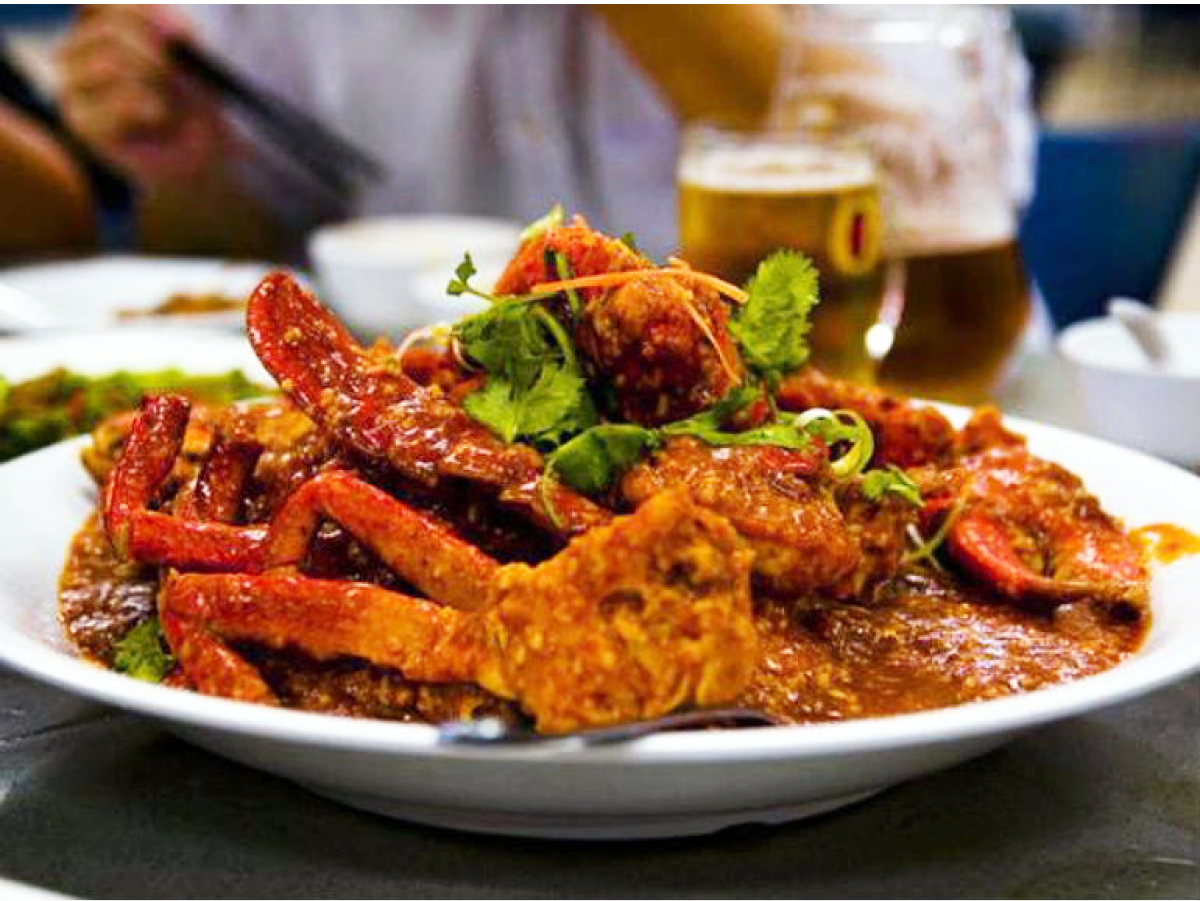Roland Restaurant: The chilli crab recipe that started it all

People may not realise it but the chilli crab we eat today is completely different from how it tasted back when it was invented in the 1950s.
Which is why my colleague and I recently made a mini-pilgrimage to Roland Restaurant to taste what a 1950s chilli crab tastes like. The seafood restaurant is the only eatery in Singapore which still serves the original 1950s recipe.
It was a Friday lunchtime and our meal was a revelation of sorts.
A few bites, the next few minutes spent in total silence as we took in the experience. Our brains, however, were filled with a million thoughts.
Singapore invented the chilli crab? Why does this chilli crab taste so different? Why is the restaurant empty? Why is it located on top of a multi-storey carpark?
Yes, for some strange reason, Roland Restaurant is located on top of a multi-storey carpark in Marine Parade, the location of the now-defunct Sin Leong Restaurant, one of the top Chinese seafood restaurants of yesteryear.
But instead of a packed room of patrons, the restaurant was empty, so much so that every crack of a crab shell and tinkle of metal utensil was amplified.
We felt a mixture of shock and sadness but also smiles and a complete sense of satisfaction as the crab was freakin’ amazing.
We talked to a waitress told us that the restaurant is less than half full during weekday dinnertimes but is at full capacity during the weekends.
But we’re ahead of ourselves quite a bit. The story of how chilli crab came to be and how it landed up at Roland Restaurant is a fascinating one in itself.
THE INVENTION OF CHILLI CRAB
In the 1950s, Madam Cher Yam Tian and her husband, Lim Choon Ngee, lived in a kampung (Malay for “village”) near the shores of East Coast, Singapore.
They would frequently catch prawns and crabs from the sea for their meals but eating the same steamed seafood was becoming quite pedestrian, even for customers, so Lim asked his wife to come up with new ways to cook the crabs. In 1953, she hit the jackpot when she came up with a chilli-and-tomato-sauce concoction which we now famously know as chilli crab.
At the couple’s small makeshift pushcart seafood restaurant along the Kallang River, the chilli crab dish became quite popular with patrons and was the main feature of her family restaurant, Palm Beach Seafood Restaurant, which opened in 1962 along Upper East Coast Road.
In 1984, the couple sold off part of the restaurant’s shares, migrated to New Zealand but business was slow so 15 years later, they came back to Singapore.
Their son, Roland Lim started working in Palm Beach before joining his godfather, Master Chef Sin Leong at Sin Leong Restaurant which at the time had shifted from Serangoon Road to the top of the Marine Parade Central multi-storey carpark.
Sin Leong was one of the four heavenly kings of Chinese cuisine who helped shaped the Singapore Chinese restaurant scene in the 1950s and 60s. When Mr Sin Leong retired, he passed the restaurant over to Roland who subsequently renamed it Roland Restaurant in 2000.
MODERN CHILLI CRAB VERSUS THE ORIGINAL
In the 1960s, Chinese restaurants took the chilli crab recipe — the hottest food trend of its time — and came up with their own renditions of the dish, the most successful of which is Dragon Phoenix who added eggs and sambal into the mix.
It resulted in less of that bottled chilli sauce flavour into what we know as the chill crab sauce of today.
In current times, most chilli crab dishes will almost always have egg swirls and sambal in its sauce. The original chilli crab rendition is now a rarity in Singapore’s food landscape.
THE ORIGINAL TASTE
The original recipe sauce is very different compared to the normal chilli crab offerings in Singapore.
It has a tomato-y, chilli sauce flavour to it, but it is much more than that — spicy (spicier than normal), sweet, savoury with perhaps a very slight tinge of sourness to balance out the flavours. It’s actually a very compelling balanced flavour.
It has a dark reddish hue, very unlike other chilli crab dishes which opt for a bright red colour. The consistency is medium thick with very little starch added and it has lots of large chopped garlic in it.
There is a very slight underlying seafood stock flavour which is accentuated when you eat the crab.
The sauce is so strong flavoured that it almost overwhelms the natural flavours of the crab if you put too much of it with the crab but that’s more of a nitpick as the sauce is irresistibly captivating.
It is a truly unique flavour which tastes nothing like any other chilli crab dish in Singapore, that is, if patrons actually order it.
A DISH FADING INTO OBSCURITY?
On the menu, two versions of the chilli crab are featured, the “Traditional Chilli Crab” and “Roland’s Chilli Crab” — which is modified to include sambal and eggs.
If you just order chilli crab, the default option is the one with sambal and eggs. You have to specifically tell the waitresses that you want the traditional version.
The waitress told us she was surprised that we ordered the original dish as most patrons prefer the chilli crab with the egg swirls.
We had mistakenly tried “Roland’s Chilli Crab” on a previous occasion and the taste resembles the traditional but is closer to the modern version of what chilli crab tastes like. The egg swirls tame the intensity of the sauce and gives the sauce its signature layered texture.
An hour later, we had finished our meal. We called for the bill and by the time we paid up, a party of four had come in through the door.
It was 2pm and aside from the new table of four, the restaurant was still empty.




